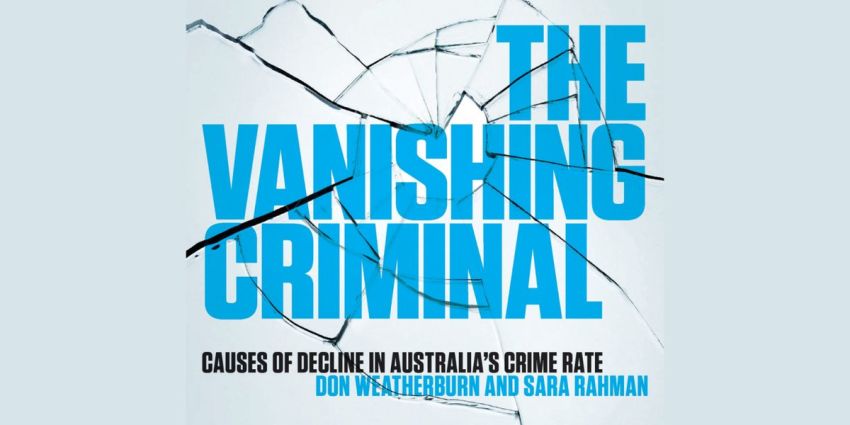
The Vanishing Criminal: causes of decline in Australia's crime rate
By Don Weatherburn and Sara Rahman
Melbourne University Press, 2021
According to a new book by Don Weatherburn and Sara Rahman, while crime rates in Australia rose markedly during the last three decades of the 20th century, in the following two decades, the rates of most of these crimes actually declined.
During the 1970s, 1980s and 1990s, Australia “faced rapidly rising rates of break and enter, motor vehicle theft, robbery, stealing, assault and fraud,” write Weatherburn and Rahman in The Vanishing Criminal.
However, “between 2001 and 2017, the recorded rate of break and enter fell by 68%, motor vehicle theft fell by 70%, robbery fell by 71%, and other theft fell by 43%.”
Not every crime has followed the same pattern of rise and fall. Fraud has increased dramatically this century. Recorded sexual assaults have also risen, although this may be due to greater willingness to report such crimes.
The authors say there is no single explanation for the fall in crime rates, pointing to a number of contributing factors.
In discussing the rise of crime before 2000, they emphasise the rising rate of heroin use, as addicts "often turn to crime as a means of funding their drug use.”
While Weatherburn and Rahman mention poverty and unemployment as factors contributing to crime, they don't present a detailed analysis of the relationship between unemployment and crime during the 1970-2000 period.
It would have been useful for the book to have included a graph showing the rise in crime and the rise in unemployment together on the same page, which would have enabled us to see how closely they correspond. In a book with more than 100 graphs, this is a surprising omission.
Unemployment rose markedly between 1970 and 2000. In 1974-75 Australia was affected by a global recession. In the 1980s and 1990s, successive Labor and Coalition governments implemented neoliberal policies, such as privatisation, that caused a rise in both unemployment and precarious forms of employment. It seems reasonable to assume that these economic factors were a major contributor to the rise in crime.
In explaining the fall of crime after the year 2000, Weatherburn and Rahman cite a number of factors. Heroin use declined. Engine immobilisers cut car theft. The replacement of cash by electronic transactions meant there was less physical money to steal (though more credit card and internet fraud). Tighter regulation of second hand dealers made it harder to sell stolen goods.
Weatherburn and Rahman also claim that police have become less corrupt and more efficient in recent years, due to increased scrutiny from a series of royal commissions, and the establishment of independent statutory bodies able to investigate police corruption.
On the other hand, they say that the rise in police numbers has had only a limited impact on crime rates.
In most states, the number of police rose faster than the population from 2000-17. However, as Weatherburn and Rahman write: "There is little reason to believe the growth in police numbers accounts for much of the fall in crime". In fact, they note that "there were large falls in crime in jurisdictions where the per-capita number of police remained stable or fell."
The authors recognise that economic factors contributed to falling crime rates after the year 2000. Unemployment, which reached a high point during the 1990s, fell during the first few years of the 21st century. Average incomes also rose during this period, contributing to a decline in crime.
While the onset of the global financial crisis in 2008 caused a rise in unemployment, it was not to a level sufficient to reverse the fall in crime, due to the other factors, according to the authors.
Last year, the COVID-19 pandemic caused a further rise in unemployment. It might have been expected that crime would rise as a result, but in fact the crime rate fell.
Weatherburn and Rahman consider various possible explanations for this, but fail to mention the temporary doubling of unemployment benefits, which eased the poverty usually associated with unemployment, which would otherwise have driven some people to commit crime.
But now Jobseeker payments are being cut, it would not be surprising if this were to lead to a rise in crime.
Millions of people remain unemployed, underemployed or precariously employed. If the government were to create jobs for them, for example in renewable energy, one of the beneficial effects would be a further reduction in crime.